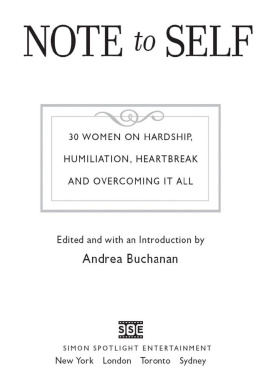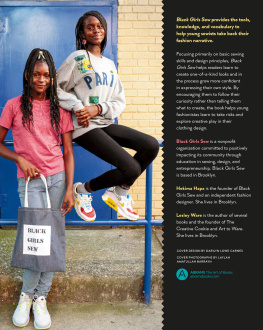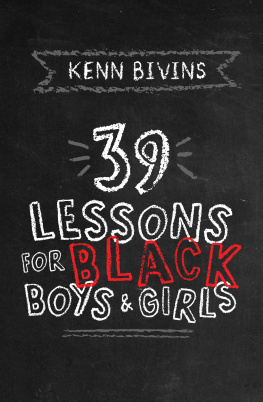To my daughters, Samira and Amelia JaneM.P.
Girls today are girls of the twenty-first century, with email accounts, digital cable, iPods, and complex video games. Their childhood is in many ways much cooler than ourswhat we would have given for a remote control, a rock-climbing wall, or video chatting! In other ways, though, girlhood today has become high-pressured and competitive, and girls are inducted into grownup-hood sooner, becoming tweens and teens and adult women before their time.
In the face of all this pressure, we present stories and projects galore, drawn from the vastness of history, the wealth of girl knowledge, the breadth of sport, and the great outdoors. Consider the Daring Book for Girls a book of possibilities and ideas for filling a day with adventure, imaginationand fun. The world is bigger than you can imagine, and its yours for the exploringif you dare.
Bon voyage.
Andrea J. Buchanan
Miriam Peskowitz
1. Swiss Army Knife.
A key tool for survival, exploring, and camping, its a knife, screwdriver, and saw with tons of extras like a magnifying glass, nail file, bottle opener, scissors, and tweezers. Best of all it fits in your pocket. Clean with hot soapy water, and add a tiny drop of mechanical oil once every three blue moons.
2. Bandana.
Can be used to keep your head cool, protect your treasure, wrap a present. Tied to a stick, it can carry your treasured possessions on your adventures.
3. Rope and Twine.
A stretch of rope and a knowledge of knots will take you many placesand may also help get you out of them.
4. Journal and Pencil, with a Back-up Pen.
Life is about memories: a quick sketch of a bird or plant, a wishlist, a jot of the most important thought ever. A pad and pencil is also perfect for spying or for writing the Great American Novel.
5. Hair Band.
For when hair gets in the way. In a pinch, you can also use your bandana, or a pencil.
6. Bungee Cord.
For strapping things down on the go.
7. Flashlight.
Basic tool for sleep outs and reading under the covers late at night. A small piece of red cellophane over the lens makes ghost stories even creepier. Eventually you can graduate to a headlamp, so your hands are free.
8. Compass.
You need to know where you are, and a compass can help. Hang it around your neck along with a whistle.
9. Safety Pins.
Because theyre good to have on hand when things need to be put back together, or when you want to express eternal friendship to a new pal by decorating with a few beads as a gift.
10. Duct tape.
Two inches wide and hard as nails. It can fix almost everything. Good for clubhouse construction.
11. Deck of cards and a good book.
Old standbys.
12. Patience.
Its a quality and not a thing, but its essential so well include it here. Forget perfect on the first try. In the face of frustration, your best tool is a few deep breaths, and remembering that you can do anything once youve practiced two hundred times. Seriously.

B ASKETBALL WAS FIRST PLAYED with a soccer ball and a suspended wooden peach basket when it was invented in 1891 by Dr. James Naismith at a YMCA in Springfield, Massachusetts. Girls originally shot hoops wearing Victorian petticoats, white muslin pinafores, and silk slippers. The dress code has thankfully changed, and basketball today is one of the few team sports that a girl can not only learn in elementary school but also dream of playing professionallly.
Basketball opened up to girlsreal uniforms and allin the 1970s. The United States passed a law known popularly as Title IX (the full name is Title IX of the Education Amendment of 1972), which said that no one, girls or boys, can be excluded from participating in school activities if that school receives federal funds. Some schools resisted, but many more decided to open up team sports to girls. As a result of Title IX, girls can now play sports at all school levels, and college womens basketball in particular has become a popular sport to watch and play.
Womens basketball made its Olympics premiere in 1996, and the American team won the gold. In 1997, the Womens National Basketball Association launched with star players, including Sheryl Swoopes, Rebecca Lobo, Lisa Leslie, and Cynthia Cooper.
WHOs ON THE TEAM
Point Guard: Shes the shortest, quickest, and best ball-handling player on the team. The Point Guard doesnt shoot much, but she is the team leader on the court and manages the plays.
Shooting Guard: She specializes in getting the ball in the basket and scoring points. Shes skilled in hitting those three-point baskets from outside the line and darting to the basket for layups. Great with the ball, she can throw, dribble, and shoot in her sleep.
Center: Shes the strongest, tallest, and highest-jumping player on the team. On college and professional teams, all eyes are on the Center. The Center rules the free-throw lane, and she shoots from right under the basket. She gets right into the mix, creates the space to shoot and score, and is also a major factor on defense for rebounding.
Power Forward: She grabs the rebounding ball from the other teams point, fast breaks it down the court, dribbles hard, and passes to the Center. Shes also a good shooter. Actually, all the players need to be good shooters.
Small Forward: The Forward does it all. She shoots, runs, passes the ball, and scores, scores, scores. Shes the ultimate player, and can substitute for anyone.
Of course, none of this matters if youre playing a pickup game or shooting solo at the hoop in front of the house.
BASKETBALL TIPS
Dribbling: Cup your hand so that its not your palm bouncing the ball, but the pads of your fingers. Think of a push-and-pull motion as you move your arm. Practice dribbling the ballnot too high or lowtil you can do it without looking. In a game, you wont have time to watch your hand on the ball. Youll be too busy preventing other players from taking it, and holding them at bay by stretching out your non-dribbling arm.
Passing: Throw the ball to a player who is primed to shoot, or who can protect it from the other team.
Shooting: Get your arms out in front, elbows bent. Your stronger arm holds the ball, the weaker supports it. Your hands are close together, with the fingers spread. Flick your wrist back, and push the ball into the air toward the net. Really push. For more fun, try a jump shot. Position yourself in classic ready position: two feet on the floor, legs slightly bent and shoulder-width apart, one foot slightly forward, and shoulders squared to the basket. Hold the ball with your arms and hands high and cock your wrists back. Aim for the backboard. When you shoot, stay relaxed, look at the rim, uncock your wristsand push the ball into the air while you jump up and slightly back. The power from your legs pushes through to your arms and sends the ball high into the air toward the net. You will be able to score many more points over the outstretched hands of defenders if you can perfect this fadeaway jump shot.












